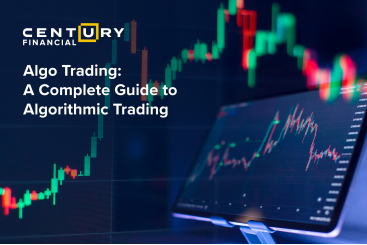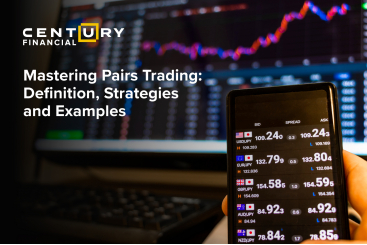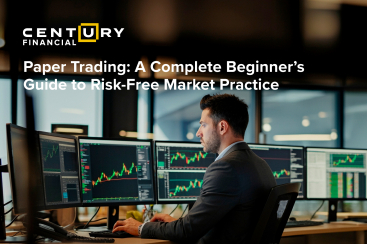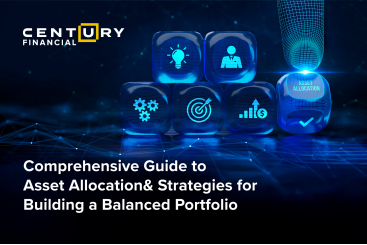Friday, October 27, 2023
Cricket World Cups: Shaping Economies and Markets
By Century Financial in 'Blog'

.jpg)
Imagine you're seated in a crowded stadium. The atmosphere is electric, the anticipation palpable. But as the players take the field, another match is unfolding – in the business world. The thrill of the Cricket World Cup is a shared emotion, not just for ardent fans but for keen-eyed businesses and stock market enthusiasts. As batsmen line up their shots, companies, too are looking to score big. These massive sporting events are more than just games; they're economic catalysts that can influence stock market tides.
The Stadium and Beyond How Sports Events Shape Economies
Let’s take a look at the relationship between business and sports events historically:
.png)
Tourism
Sporting events serve as magnets for international tourists. Fans worldwide flood to the host country, eager to witness the sport. Remember when England and Wales played hosts in 2019? They didn't just welcome cricketers. An astonishing 800,000 international fans flocked the cities, converting stadiums into global melting pots. Many ventured beyond, boosting regional tourism..png)
Hospitality
Hotels and other lodgings don't just serve as places of rest but become integral parts of the World Cup experience. The demand surge means full rooms and an opportunity for the hospitality industry to showcase local culture and warmth. The 2015 World Cup saw occupancy rates touching a sky-high 90%.(Source: World Travel & Tourism Council (WTTC) report.)
.png)
Travel
Airline ticket bookings surge, often leading to airlines offering special packages or additional flights. Rail networks, especially in countries with robust train systems, witness increased ticket sales. Imagine airlines as batsmen and every flight booking as a run scored. During the 2015 Cricket World Cup, airlines saw their scores soar with a 15-20% rise in bookings. Rail networks, also lead to massive crowd in the city.(Source: International Air Transport Association (IATA) report)
.png)
Food & Beverage:
Local food becomes an attraction. Special menus, themed dishes, and event-related discounts can be commonly observed. You might recall the city's vibrant pubs if you were in Cardiff during the 2019 India vs Pakistan match. With a 25% sales spike, these hubs transformed into mini-celebrations.(Source: UK Hospitality Association report.)
.png)
Media and Broadcasting
Commercial slots during live broadcasts become prime real estate for advertisers, leading to increased ad rates. Digital platforms also see a surge in subscription or pay-per-view models. The global cumulative average audience for the 2019 World Cup reached 1.6 billion, with digital viewership seeing a 30% growth compared to the previous edition.(Source: ICC Media Rights Report.)
.png)
Infrastructure and Real Estate
Cities often undergo infrastructural upgrades, either temporary or permanent. From revamped transportation systems to beautified public spaces, there's a noticeable facelift. For instance, during the 2015 Cricket World Cup, co-hosted by Australia and New Zealand, Melbourne's local government reportedly invested AUD 100 million in infrastructural upgrades, including improvements to public transportation and refurbishment of sporting facilities.(Source: Melbourne City Council Infrastructure Report 2014-2015.)
.jpg)

Picture a cold Coca-Cola bottle on a sunny match day. This association didn't happen overnight. Their presence in sports has given them a unique recall. After the World Cups of 2014 and 2019, they didn't just quench thirst but also recorded sales spikes of 2% and 3%, respectively. Their stock? It bubbled up by 6% during both events.
A sports event draws millions of viewers each year, providing a platform for the brand's high visibility among the audience, reflected in its financial performance over the years.This was again, ver strategically done by PepsiCo. Their "Live for Now" campaign wasn't just a tagline but a business mantra, leading to a 4% revenue jump post the 2015 IPL and a stock ascent of 7%.


Think of the iconic "Just Do It" campaign against a cricket backdrop. That's Nike, strategically positioning itself across sports. Their reward? A 10% revenue boost after the 2015 Cricket World Cup and an 8% stock surge. Nike has over 650 sponsorship deals ranging across over 140 different leagues/associations. Within New York, their top market, the brand has over 75 sponsorship or media deals, which includes influencers, athletes, and artists.
Redefined cricket broadcasting with innovative techniques and multilingual commentary. After the 2019 Cricket World Cup, they saw a 15% surge in viewership and significant gains in ad sales and stock value. Their digital platform, Hotstar, broke viewership records. With impactful campaigns and a robust multi-platform presence, Star Sports has become a giant in sports edia.
.png)
Concluding on a High Note
From the echoing roars in stadiums to the silent upticks on stock market graphs, cricket is more than a sport – it's a business symphony. Brands like Coca-Cola, PepsiCo, and Nike have shown that the pitch can lead to profitability with the right strategies. For stock market enthusiasts, these tales serve as a testament: there's more to sports than meets the eye; perhaps, it's time to play the game.
Zomato collaborated with Century Financial, and they've introduced an interactive feature of 'Hand Cricket', allowing users to play virtual cricket games. These innovative strategies not only enhance user engagement but also have the potential to increase revenue and stock value.
The content in this blog, including any research, analysis, opinions, forecasts, or other information (collectively, "Information"), is provided by Century Financial Consultancy LLC (CFC) for marketing, educational, and general informational purposes only. It should not be construed as investment advice, a recommendation, or a solicitation to buy or sell any financial instruments.
This Information may also be published across various channels, including CFC’s website, third-party platforms, newsletters, marketing materials, emails, social media, messaging apps, webinars, and other communications. While CFC strives for accuracy, we do not guarantee the completeness, reliability, or timeliness of any content. Any decisions made based on this Information are at your own risk. CFC accepts no liability for any loss or damage arising from its use.
Trading financial products involves significant risk and may not be suitable for all investors. Please ensure you fully understand the risks and seek independent professional advice if necessary.
Please refer to the full risk disclosure mentioned on our website.









.png)
.png)
.png)
.png)


